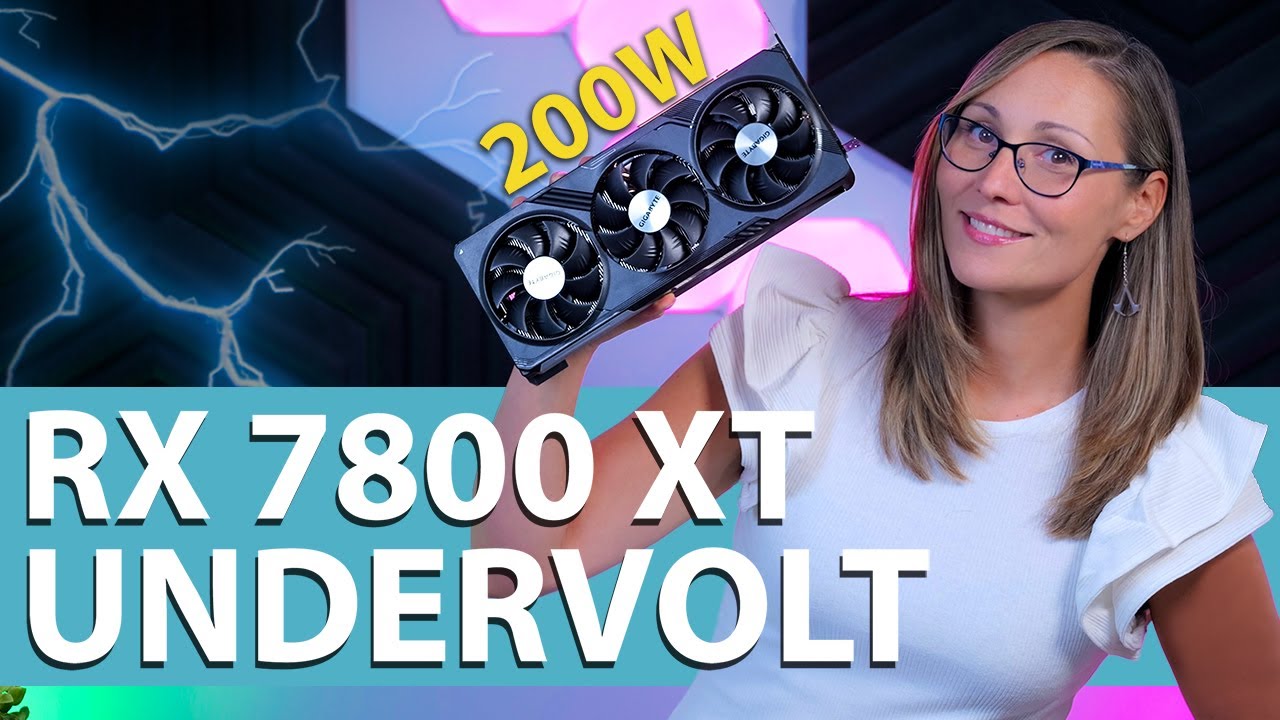AMD’s RX 7800 XT is a great card for the money, often beating out the RTX 4070 for $100 less. Though it’s not perfect. It struggles to match the GeForce card once ray tracing is enabled, and in terms of power efficiency, it’s nowhere close. That said, power efficiency is one metric that can be messed with, and as Techtesters have since discovered it’s possible to make the RX 7800 XT helluva lot more power efficient and still match the RTX 4070 in many games.
In our testing, the AMD-designed RX 7800 XT sucks around 258W from the wall on average during gaming, hitting peak wattage around 295W. An overclocked card, such as the RX 7800 XT TUF Gaming OC Edition I tested, can consume as much as 270W on average.
Meanwhile, the RTX 4070 Founders Edition eats up around 197W on average in the same test, with peak wattage of just 232W.
On the two reference cards that works out to:
1080p
RX 7800 XT: 0.43 Frames/J RTX 4070: 0.63 Frames/J
4K
RX 7800 XT: 0.18 Frames/J RTX 4070: 0.26 Frames/J
What Techtesters found (via Videocardz) was that you could substantially lower the power limit on their Gigabyte RX 7800 XT Gaming OC and still secure performance to match an RTX 4070.
Techtesters lowered the power limit of the card to its minimum at 90% in AMD’s Adrenalin software, then adjusted the core voltage and clock speed to reach a stable undervolt. Their card ran around 202W with the undervolt—down from a lofty overclocked 286W—which left them with a clock speed of around 2220MHz while gaming.
The results are pretty impressive considering that sort of power saving.
(Image credit: Future)
Best CPU for gaming: The top chips from Intel and AMD.
Best gaming motherboard: The right boards.
Best graphics card: Your perfect pixel-pusher awaits.
Best SSD for gaming: Get into the game ahead of the rest.
Most of Techtester’s benchmarks saw an around 4–13% drop in performance for the undervolt, except for Starfield, which was an outlier with a 19% decrease. Still, that’s pretty great for a 29% reduction in power draw.
Compared to the RTX 4070, which the RX 7800 XT will usually beat in purely rasterised games at stock performance, even the underclocked card still managed to often match Nvidia’s.
Perhaps I shouldn’t be surprised that an AMD graphics card adores an undervolt—that’s often the case with the red team’s GPUs. However, since the RX 7800 XT is so close to the RTX 4070, this undervolt is that much more impressive.
While the RTX 4070 still has an edge over AMD with ray tracing and DLSS, including the new Ray Reconstruction feature we recently tried out in Cyberpunk 2077, this only adds to reasons why you might want to consider the cheaper RX 7800 XT.











